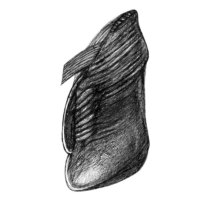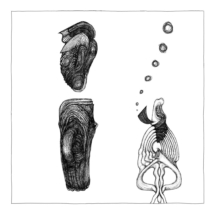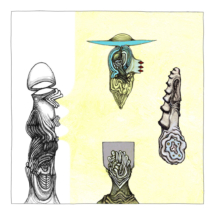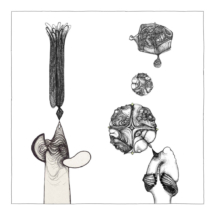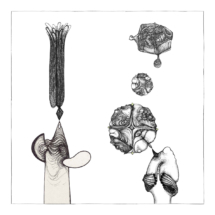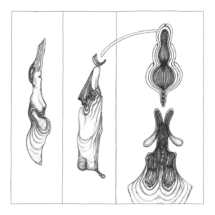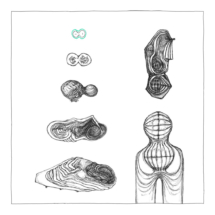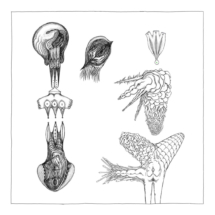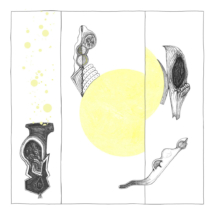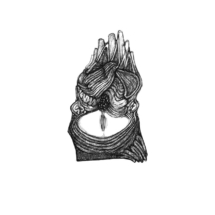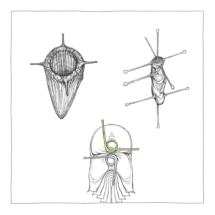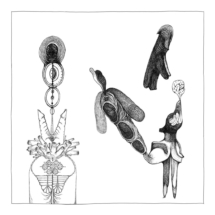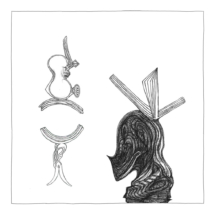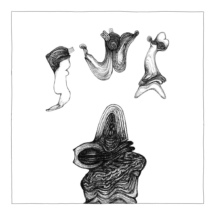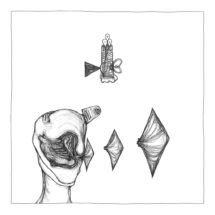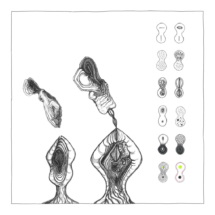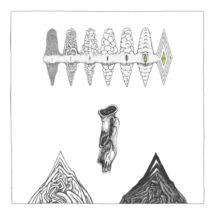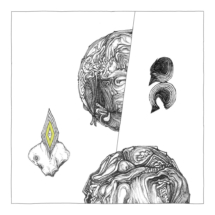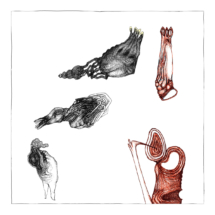Terrestrial Period
The work of Yolyanko William (Cuba, 1975) is energy in its purest state. Amorphous figures seem to glide through space to create their own universes: they expand, twist, contract, leak… In the silence of the white quadrant there is a rarefied atmosphere, an aimless movement, sometimes slow, sometimes frenetic; a bubbling of life that has not yet found its moment of being. It is possible to glimpse in these pieces the traces of a blind impulse or psychic automatism, a letting oneself be carried away by the infinite flow of the stroke. These lines, the same ones that are loaded with the technical rigor of the expert draftsman, play freely across the plane to offer the viewer more than a discourse, an experience.
William’s stance towards his work is “not to talk about it”, not to pigeonhole it in concepts that compromise the free reception of the viewer, because each form is nothing other than a universe yet to be discovered. This way of facing the creative act connects him with certain features of abstraction as an artistic current, which, after stripping the works of their anchorage to reality, turns them into pure matter. However, there is no rigorous idea of the concept of the abstract in these images. Sometimes I feel that they can have real references, starting from stories that coexist and mix in the artist’s mind and then emerge like this: chaotic, free and disorderly. This dreamlike world necessarily connects us with certain surrealist codes, although it is not prudent (nor necessary) to classify it entirely within an artistic current or “neo-style”. William explores various references and then reborns each piece with an identity all its own.
The image is a means of communication that possesses, according to Roland Barthes, a language without codes, since it is devoid of a visual alphabet that can define it as happens, for example, with written language. For this reason, the meaning of its signs can never be taken in a unidirectional way, but will depend on the context in which it is developed, on the social or cultural conditioning factors of the receiver and on how he/she decides to articulate the contents of the work. The viewer is then confronted with an image aware of its polysemy, but reads and decodes it from his subjectivity and enjoys finding visual connections and concrete concepts. In their eyes, no signifier is deprived of meaning.
Yolyanko’s work puts all this in check. The artist does not stop to analyze the dircursive connotation that each sign may have, but lets them be freely. In this way, the reading becomes hermetic, sows doubts, and even leaves a certain sense of frustration in those who seek to decode every detail. And the fact is that these pieces operate in a different layer of connections, that is why they speak another language, they are everything and nothing at the same time; they offer very strong emotions or leave us bewildered before the abyss. There is an intrinsic relationship between these works and their author. Each piece is an extension of himself, his essence, energy and thoughts. He makes his personal universes available for us to enter and lose ourselves in his proposal of infinity. There are no dogmas, sentences, univocal positions or conceptual ties in William’s pieces. Maybe they are just a wink, a spark, a light… Perhaps they are only the beginning of a long journey that everyone must travel without haste and on their own path.
Shirley Moreira

